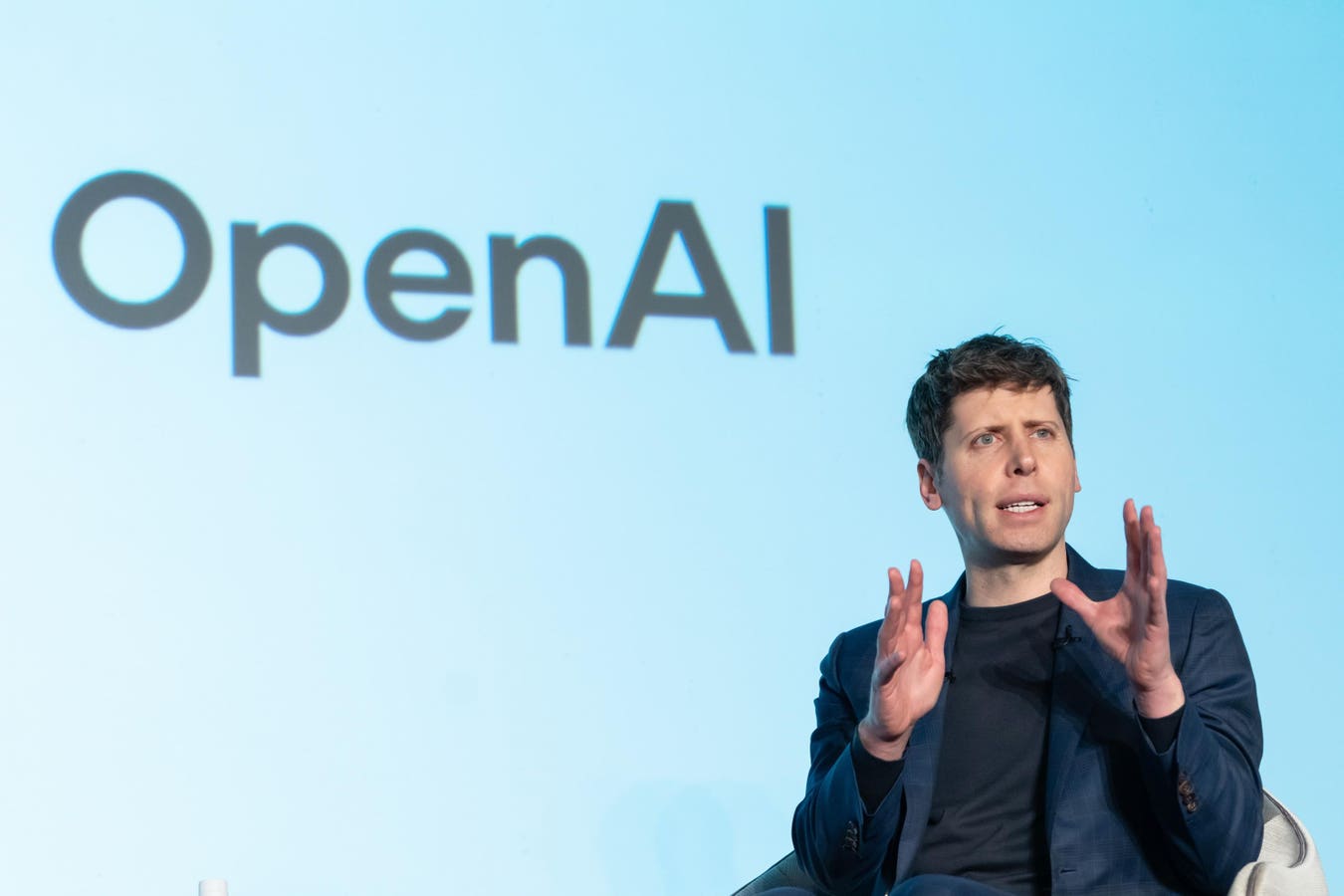TOKYO, JAPAN – FEBRUARY 3: Open AI CEO Sam Altman speaks during a talk session with SoftBank Group CEO Masayoshi Son at an event titled “Transforming Business through AI” in Tokyo, Japan, on February 03, 2025. SoftBank and OpenAI announced that they have agreed a partnership to set up a joint venture for artificial intelligence services in Japan today. (Photo by Tomohiro Ohsumi/Getty Images)
Getty Images
It’s an odd spectacle: Sam Altman warning about an AI bubble while his company, OpenAI, rockets toward a $500 billion valuation.
If there’s more obvious proof that we’re not in traditional bubble territory, it’s hard to imagine what it might be.
Speaking to The Verge, Altman acknowledged what many observers already suspected. “If you look at most of the bubbles in history, like the tech bubble, there was a real thing. Tech was really important. The internet was a really big deal. People got overexcited. Are we in a phase where investors as a whole are overexcited about AI? My opinion is yes,” he said.
But here’s where Altman’s bubble warning breaks down into paradox. In the same conversation where he cautioned about investor overexcitement, he casually mentioned expecting OpenAI to spend “trillions of dollars on its data center buildout in the not very distant future.”
His attitude toward the inevitable criticism? “You should expect a bunch of economists wringing their hands, saying, ‘This is so crazy, it’s so reckless,’ and we’ll just be like, ‘You know what? Let us do our thing.'”
This isn’t the language of someone truly concerned about unsustainable speculation. It’s the confidence of someone who sees the long-term trajectory clearly, even if the short-term valuations seem frothy.
The Infrastructure Reality Check
The numbers backing Altman’s confidence are staggering. OpenAI just secured $8.3 billion in new funding at a $300 billion valuation round that was five times oversubscribed. Employee share sales could push the company’s valuation to $500 billion, making it one of the most valuable private companies in history. These aren’t the desperate funding rounds of bubble companies scrambling for survival; they’re the measured capital raises of a company planning for massive scale.
OpenAI isn’t alone in this infrastructure binge. Microsoft plans to spend $80 billion on AI data centers this fiscal year alone. Meta is projecting up to $72 billion in AI and infrastructure investments. These aren’t speculative bets — they’re calculated investments in what companies see as the next fundamental computing platform.
When Altman tweets that OpenAI will bring “well over 1 million GPUs online by the end of this year,” he’s not describing bubble behavior. He’s describing the build-out of critical infrastructure for a technology that’s already demonstrating real utility and rapid adoption.
The Usage Explosion
Adoption metrics tell a story that bubble skeptics often miss. Altman recently revealed that reasoning model usage among OpenAI’s customers is exploding. Free users went from less than 1% to 7% daily usage, while Plus users jumped from 7% to 24%. This isn’t the shallow adoption curve typical of bubble technologies; it’s the steep trajectory of tools becoming indispensable.
Our research at Futurum Group suggests AI inference workloads could account for more than 80% of computing by 2030, when factoring in on-device processing, autonomous driving, edge computing, and agentic AI systems. If accurate, we’re not looking at a bubble but at the early stages of the most significant computing platform shift since mobile.
Tuesday’s tech selloff, triggered partly by an MIT study claiming 95% of companies see no returns from generative AI, exemplifies the market’s nervous energy around AI investments. NVIDIA Corp. dropped 3.5% and Palantir nearly 10%, suggesting investors are increasingly sensitive to any hint that AI returns aren’t materializing fast enough.
But as I have been saying since the arrival of ChatGPT, this build out will last decades as AI will be the arbiter of the world’s leading economies and all the others. We are just getting started. The expectation that enterprise AI deployments should show immediate, measurable returns reflects a fundamental misunderstanding of how transformative technologies get adopted. Companies don’t typically see ROI from major technological shifts in quarters. They see it in years.
The Bubble Brigade Crowd
High-profile financial figures Ray Dalio and Joe Tsai have warned about AI investment pacing ahead of sustainable growth, drawing parallels to the dotcom crash. Apollo Global’s Torsten Slok argues the current situation could eclipse the 1990s internet bubble, noting that the 10 largest S&P 500 companies are more overvalued relative to fundamentals than they were at the dotcom peak.
These warnings deserve attention, but they conflate different types of risk. Yes, some AI startups are overvalued, and some applications overhyped. But the core infrastructure investments driving the boom are based on demonstrated utility and clear demand trajectories.
Meta’s approach illustrates why the smartest companies aren’t treating this as bubble territory. It is optimizing for the future while continuing to be one of the best plays for real world AI consumption. The company is simultaneously laying groundwork for AGI while embedding AI into everyday products that millions use daily. This dual approach of building for the long term while monetizing current capabilities reflects confidence in AI’s staying power.
On Thursday, the company confirmed a Wall Street Journal report that it has paused hiring for its new AI division amid the restructuring. But it doesn’t signal Meta intends a major cutback in AI spending – it is simply in digestion mode after a massive spending spree that included several acquisition-sized offers and hires in the nine-figure range.
Before pouring more investment into its AI teams, Meta needs time to place and access its new talent before forging to new breakthroughs like superintelligence.
Altman’s apparent contradiction — warning about bubbles while planning multitrillion-dollar infrastructure investments— makes perfect sense. He’s distinguishing between short-term market froth and long-term technological transformation. Investor overexcitement in the near term doesn’t negate the fundamental importance of the underlying technology.
The AI sector may be experiencing speculative excess in valuations and expectations. And certainly not all names that have benefitted from AI are of the same quality. But when the CEO is most positioned to benefit from that speculation, it suggests we’re witnessing something more substantial than a bubble. We’re watching the expensive, messy process of building the next computing platform, one that promises to be worth every overexcited dollar invested in its foundation.
In bubbles, the smart money gets out early. In genuine technological revolutions, it doubles down on infrastructure. OpenAI’s $500 billion trajectory signals which category we’re really in.









